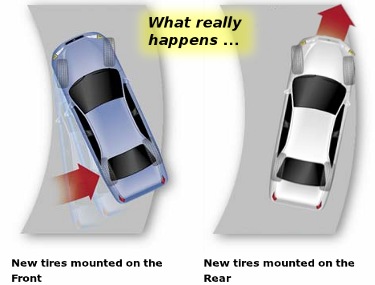Originally Posted By: CapriRacer
Originally Posted By: Ken2
......Is the practice of buying just two tires at a time a regional practice? I don't know of anyone I've heard of, nor any talk I've overheard in a tire shop, of people just buying two in this neck o' the woods.......
I don't think this is regional in any way.
In the days when RWD's were the common configuration, it wasn't much of an issue - the fronts and the rears wore at about the same rate. But when FWD's started becoming common, it was quickly discovered that the fronts wore much, much faster than the rears.
Given that the average consumer neglects vehicle maintenance - particularly tire rotation - this surfaced as an issue. It continues to be an issue. In other words, the average consumer STILL neglects tire rotation.
I do wonder how the use of winter tires has impacted things. It wasn't that long ago that the use of winter tires wasn't really that common. Things have changed over time.
I think it's more an economic issue, and a sign of the non-Recovery in most places. My lady insisted on getting two tires rather than four last year, even though I suggested getting a set of four new ones, then selling the two that had some life left. It was a classic case where she bought the car used from a private seller, for a great price, but the tires were mismatched pairs with different treadwear. (That could happen even to someone who had the cash for four good new tires, too.)
I would bet a Macanudo that the cost of tires has risen faster than the rate of inflation the past 10 years. Most folks know nothing of the great rebate deals you can get online from DTD and other tire sites. For those who only know to go to B+M tire shops and are oblivious to rebates, buying a set of four new tires can be a very big deal, financially. Thus, if they have two in front at the wear bars but two in rear with some tread left, (who needs rotation?) they just get the fronts replaced. Like what my honey did last year.
And what if one tire gets punctured and can't be repaired when the tires are in mid-life? Had that happen, too. Buying a set of four tires is almost always best, I am sure, but there are good reasons why it is not always practical.



